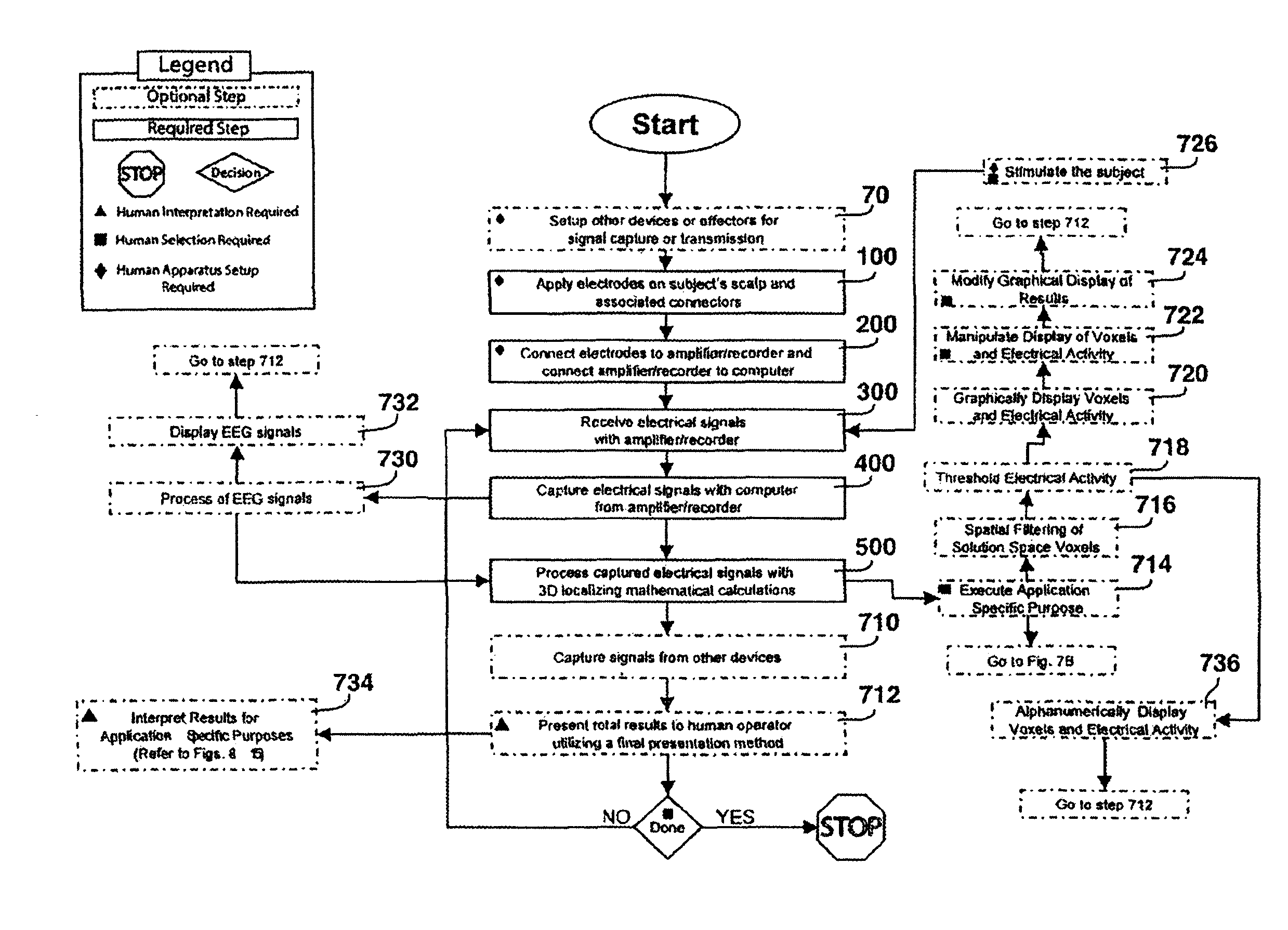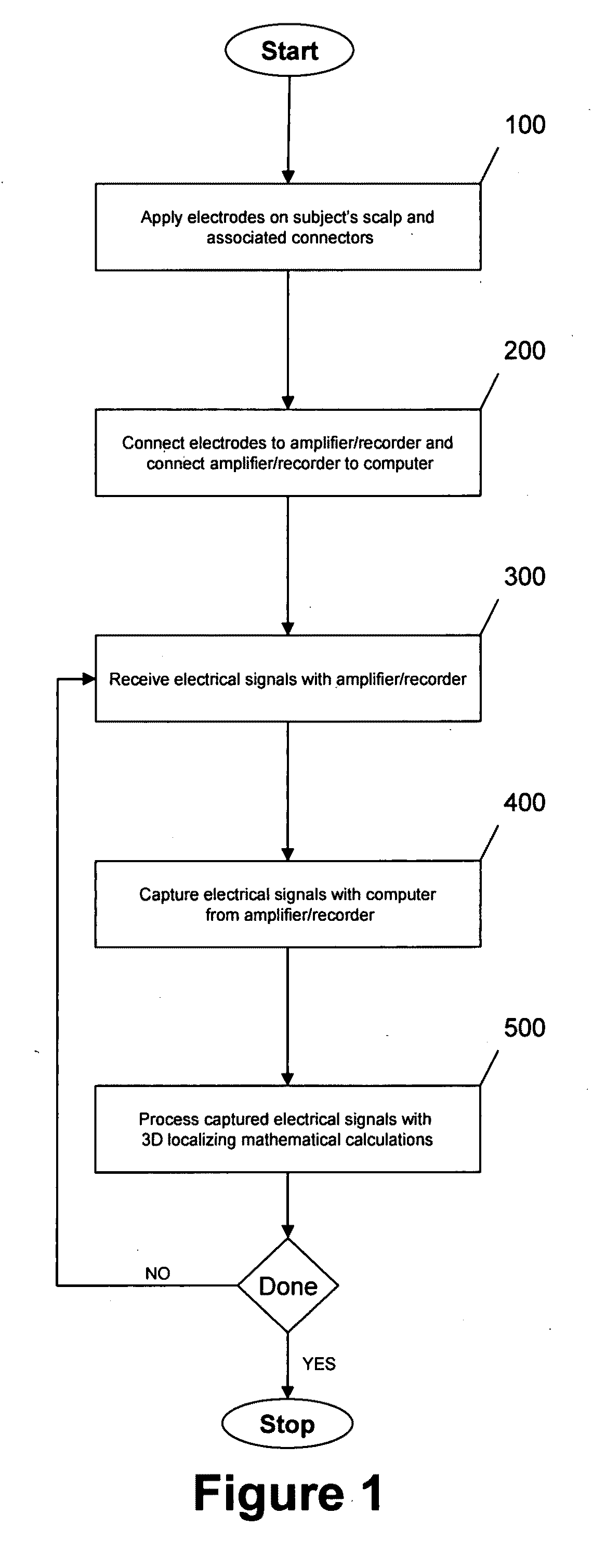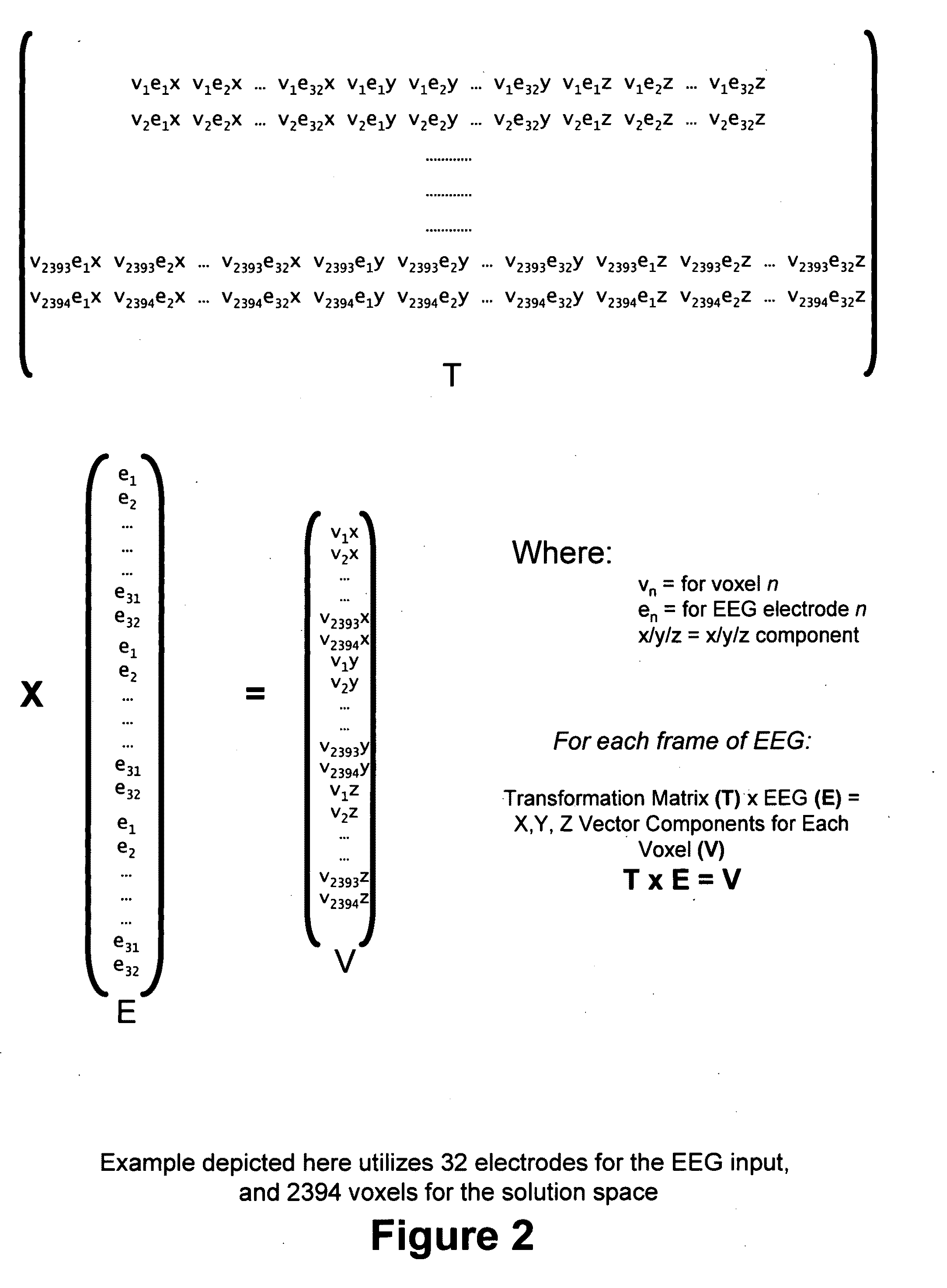Three-dimensional localization, display, recording, and analysis of electrical activity in the cerebral cortex
a technology of electrical activity and cerebral cortex, applied in the field of medical devices concerning the brain, can solve the problems of large size, lack of proper objective diagnosis, and high cost of medical equipmen
- Summary
- Abstract
- Description
- Claims
- Application Information
AI Technical Summary
Benefits of technology
Problems solved by technology
Method used
Image
Examples
Embodiment Construction
A Preferred Embodiment of the Present Invention—FIG. 1
[0181]A preferred embodiment of the present invention is outlined in FIG. 1. It consists of several fundamental steps where:
[0182]Step 100 entails the application of electrodes on a subject's scalp. This requires a practical method to hold the electrodes in place on the scalp so as to make good electrical contact. Typically this is accomplished with manually attached electrodes with adhesives or caps / cap-like structures that fit over a subject's scalp that integrate or have adapters for the electrodes; a number of these are commercially available. A conductive medium is also generally required for the conductance of electrical signals between the scalp and electrodes; typically the conductive medium is the same as the adhesive used, although it can be separate. The positions of the electrodes may be known to assist in the localization calculations, or generalized electrode positions based on ratios or morphological features of th...
PUM
 Login to View More
Login to View More Abstract
Description
Claims
Application Information
 Login to View More
Login to View More - R&D
- Intellectual Property
- Life Sciences
- Materials
- Tech Scout
- Unparalleled Data Quality
- Higher Quality Content
- 60% Fewer Hallucinations
Browse by: Latest US Patents, China's latest patents, Technical Efficacy Thesaurus, Application Domain, Technology Topic, Popular Technical Reports.
© 2025 PatSnap. All rights reserved.Legal|Privacy policy|Modern Slavery Act Transparency Statement|Sitemap|About US| Contact US: help@patsnap.com



